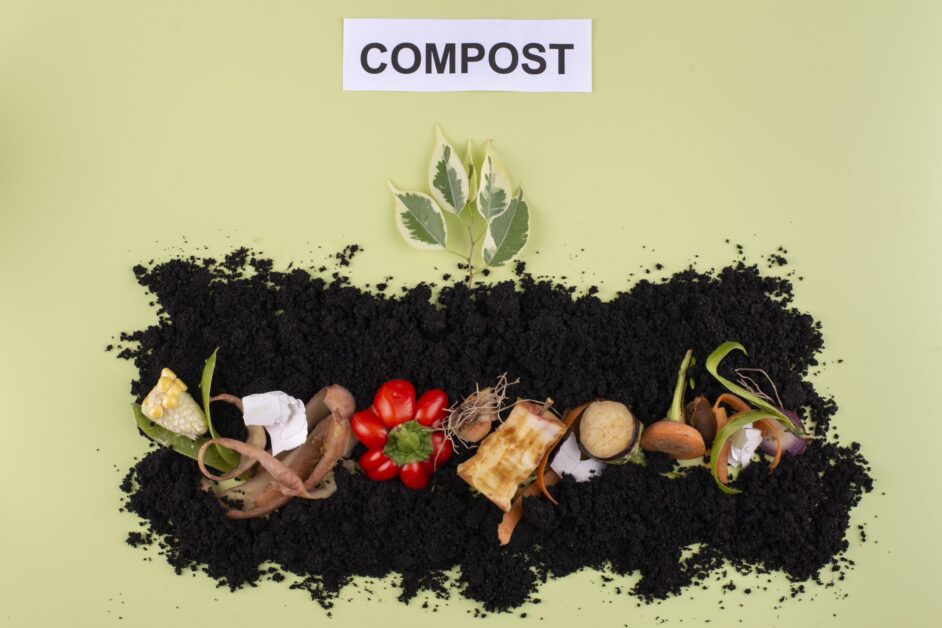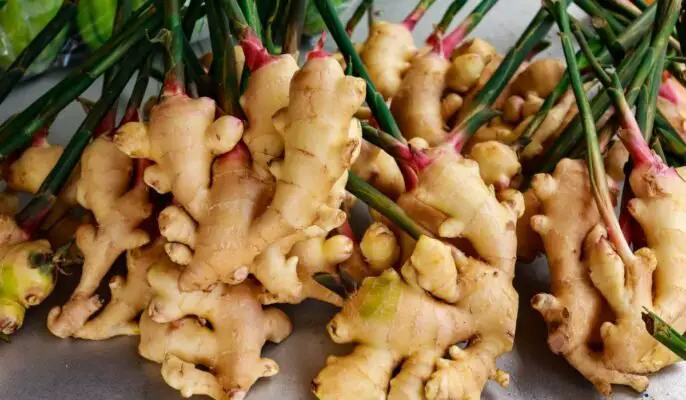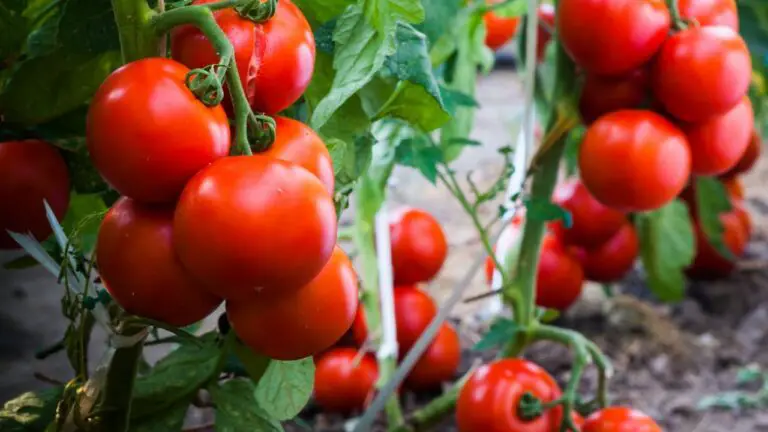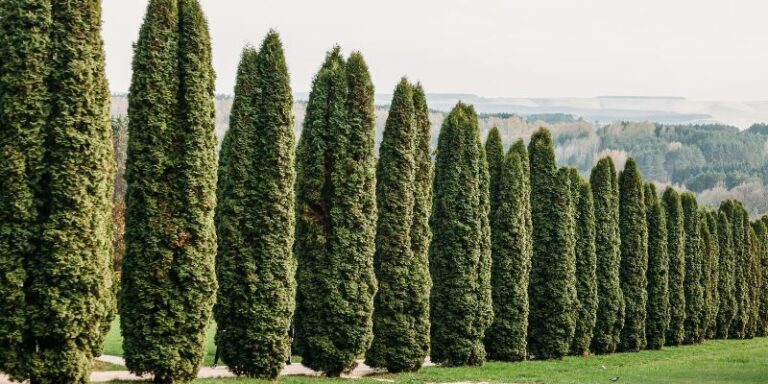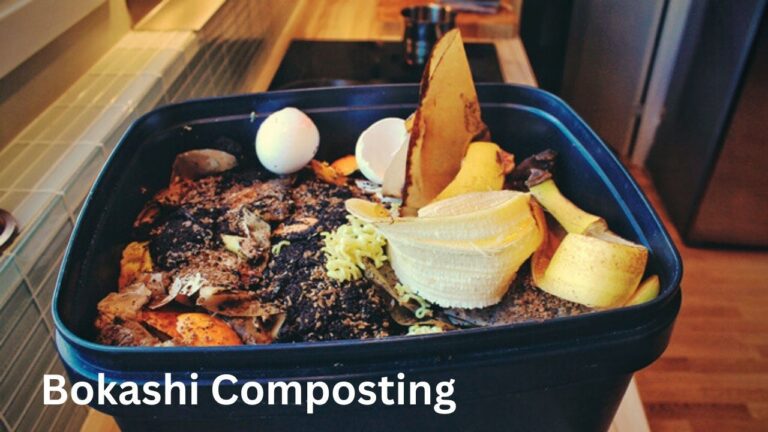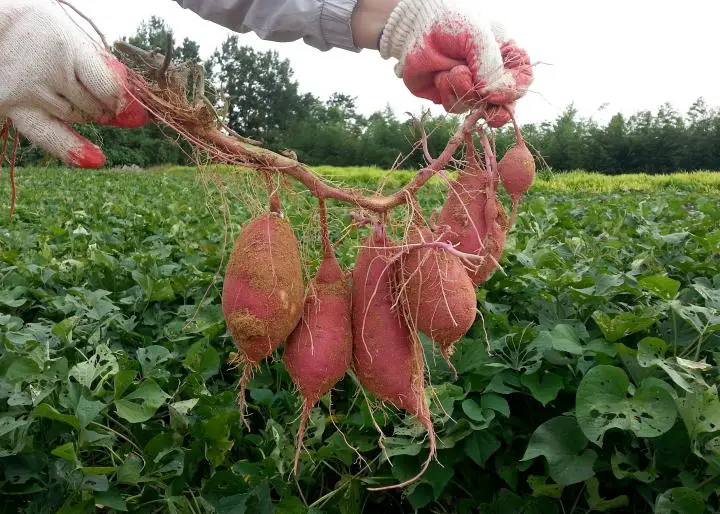How to Compost Leaves the Right Way
Table of Contents
Benefits of composting leaves for your garden

Compost leaves for your garden can provide a plethora of benefits that will make your plants thrive. Firstly, leaf compost is rich in essential nutrients like nitrogen, phosphorus, and potassium, which are vital for plant growth. When you incorporate this nutrient-rich compost into your soil, you are essentially infusing it with the building blocks necessary for healthy plants.
Furthermore, leaf compost acts as a natural conditioner for your soil, improving its structure and enhancing its water-holding capacity. This means that your plants will have greater access to moisture and can withstand periods of drought more effectively. Additionally, the improved soil structure promotes better root development and penetration, encouraging stronger and more resilient plants. With the addition of leaf compost, your garden will be well-equipped to thrive in various environmental conditions.
Moreover, leaf compost helps to suppress weeds by forming a protective layer over the soil. This inhibits weed growth and reduces the need for harmful chemical herbicides. In turn, this not only saves you time and effort but also contributes to a healthier and more sustainable gardening practice. By composting leaves, you are not only recycling a valuable resource but also creating an optimal environment for your plants to flourish.
Understanding the ideal conditions for composting leaves
Dry leaves can be a valuable resource for your compost pile, but it’s important to understand the ideal conditions for composting them effectively. One of the key factors to consider is the carbon-to-nitrogen ratio, commonly referred to as the C/N ratio. Leaves are high in carbon and have a high C/N ratio, which means that they break down slowly. To facilitate decomposition, it’s crucial to provide the right balance by adding nitrogen-rich materials, such as grass clippings or kitchen scraps, to your compost pile. This helps to speed up the process and ensures that microorganisms have the necessary nutrients to break down the leaves efficiently.
In addition to the C/N ratio, moisture levels also play a vital role in leaf composting. Your compost pile should have a moisture content of approximately 50-60%. Too much moisture can result in a slimy, anaerobic environment that slows down decomposition and promotes the growth of harmful bacteria. On the other hand, if the pile is too dry, the microorganisms responsible for breaking down the leaves won’t be able to thrive.
Maintaining the ideal moisture levels can be achieved by periodically watering the compost pile and covering it with a tarp during rainy periods or excessive heat to regulate moisture evaporation. By ensuring the right balance of carbon, nitrogen, and moisture, you can create an environment that is conducive to the decomposition of leaves and produce nutrient-rich compost for your garden.
Selecting the right composting method for your leaves
One of the key factors in successful leaf composting is selecting the right composting method for your leaves. There are several options available, each with its own advantages and considerations. One popular method is the traditional compost pile, which allows for easy decomposition and requires minimal setup. Another option is the use of composting bins or containers, which provide a more controlled environment and can help optimize decomposition.

Additionally, some gardeners opt for compost tumblers, which offer the convenience of easy turning and faster decomposition. Ultimately, the choice of composting method will depend on the specific needs and constraints of your garden, as well as your personal preferences. It’s important to carefully evaluate your options and select the method that aligns best with your goals and resources.
When selecting a composting method for your leaves, consider factors such as the amount of space available, the desired speed of decomposition, and your level of involvement in the composting process. For example, if you have limited space in your garden, a compost tumbler or a compost bin may be more suitable, as they take up less room and offer more control over the composting environment.
On the other hand, if space is not a constraint, a traditional compost pile can be a cost-effective and efficient option. Additionally, if you prefer a hands-on approach and enjoy turning and aerating the compost, a compost pile or tumbler might be the best fit for you. Ultimately, the right composting method will be one that suits your needs, resources, and level of engagement, helping you create nutrient-rich compost for your garden while minimizing hassle and maximizing efficiency.
Preparing your leaves for composting
Leaves are a valuable source of organic matter for your compost, but before you start composting, it’s essential to prepare them properly. Begin by collecting leaves from your yard, ensuring that they are free from debris and contaminants such as plastic bags or twigs. If you have a large amount of leaves, consider using a leaf blower or rake to gather them into manageable piles.
Once you have collected your leaves, it’s best to shred them before adding them to your compost pile. Shredding increases the surface area of the leaves, expediting the composting process. You can use a shredder, a lawnmower with a bag attachment, or simply run over the leaves with a lawn mower to break them down into smaller pieces. Remember to wear protective gear, such as gloves and goggles, while shredding the leaves to avoid any potential injuries.
Preparing your leaves for composting is a crucial step in creating nutrient-rich compost for your garden. By ensuring that your leaves are free from debris and contaminants and shredding them to increase their surface area, you are setting the stage for efficient decomposition. Taking the time to properly prepare your leaves will lead to a more balanced and productive composting process, ultimately benefiting your garden in the long run.
Choosing the right composting container or bin
When it comes to composting leaves, selecting the right composting container or bin is crucial in ensuring successful decomposition and nutrient-rich compost for your garden. There are various options available, each with its own advantages and considerations.
One popular choice is a traditional compost bin, which can be made of wood, plastic, or metal. These bins provide a secure and contained environment for composting, preventing the spread of pests and keeping the process tidy. They also offer good airflow and drainage, vital for proper decomposition. Additionally, their size can accommodate larger amounts of leaves, making them ideal for larger gardens or for those who have a significant amount of leaves to compost.
Alternatively, you may opt for compost tumblers or rotating bins. These containers have the advantage of allowing easy turning and aerating of the compost, promoting faster decomposition. They are particularly suitable for busy gardeners or those with limited space, as they require less effort to maintain and take up less room. However, they may have smaller capacities compared to traditional bins, so consider your composting needs before making a decision.
Overall, the choice of the right composting container or bin depends on factors such as your garden size, composting goals, and available space. Remember to select a container that provides proper airflow, drainage, and sufficient capacity for your leaf compost. With the appropriate container, you can embark on your composting journey with confidence, knowing that you are providing the ideal environment for the breakdown of leaves into nutrient-rich compost for your garden’s benefit.
Layering techniques for efficient leaf composting
Layering techniques are essential for efficient leaf composting in your garden. By properly layering your leaves, you can ensure that they break down effectively and provide maximum benefits to your plants. The key to successful layering is achieving a balance between carbon-rich materials (often called browns) and nitrogen-rich materials (known as greens).

Start by creating a layer of browns at the bottom of your compost pile or bin. This can include dried leaves, straw, wood chips, or shredded newspaper. These carbon-rich materials create a foundation for the composting process. On top of the browns, add a layer of greens such as food scraps, grass clippings, or fresh garden debris. Greens provide the necessary nitrogen that helps to speed up decomposition.
Continue layering the browns and greens, ensuring that the ratio is approximately three parts carbon to one part nitrogen. This balance is crucial for a healthy composting process. Repeat the layering process until your pile reaches the desired height. Remember to moisten each layer as you go, as moisture is vital for the decomposing process. With these layering techniques, you can create an efficient leaf compost that will give your garden the nourishment it needs.
Adding the right mix of greens and browns to your leaf compost
To create a successful leaf compost, it’s crucial to achieve the right balance between greens and browns. Greens refer to nitrogen-rich materials such as fresh grass clippings, vegetable scraps, and coffee grounds. Browns, on the other hand, are carbon-rich materials like dried leaves, straw, and newspaper. The combination of these two types of ingredients is essential for a healthy composting process.
The ideal ratio for greens to browns is approximately 2:1. This means that for every two parts of greens, you should add one part of browns. This balance ensures that there is enough nitrogen for the microbes to thrive and break down the organic matter, while the carbon-rich browns provide structure and prevent the compost from becoming too wet or smelly.
It’s worth noting that the ratio may vary depending on the specific materials you have available. For example, if you have an abundance of fresh grass clippings, you may need to add more browns to maintain the proper balance. Similarly, if you have primarily dried leaves, you might need to add additional greens to speed up the decomposition process. The key is to adjust the mixture as needed to create an optimal environment for decomposition.
Understanding the importance of moisture in leaf composting
Maintaining proper moisture levels is crucial when it comes to successfully composting leaves. Water is an essential component for the decomposition process, as it helps to break down the organic matter and allows beneficial microorganisms to thrive. Without sufficient moisture, the composting process can slow down or even come to a halt.
Ideally, the moisture content in a leaf compost pile should be around 50-60%. This level provides enough moisture for the microbes to do their work effectively, without causing waterlogged conditions that can lead to anaerobic decomposition and unpleasant odors. To ensure the right moisture balance, it’s important to monitor the compost pile regularly and make adjustments as necessary.
Too dry of a compost pile can hinder decomposition and result in a lack of available moisture for the microorganisms. If the pile feels dry to the touch, it’s crucial to add water. This can be done by spraying the pile with a fine mist until it feels damp throughout. On the other hand, if the pile is too wet and begins to emit a foul smell, it’s a sign of excessive moisture.
In such cases, it’s important to add dry materials, like straw or shredded cardboard, to absorb the excess moisture and restore a proper balance. By maintaining the right moisture level, you can ensure that your leaf composting process is efficient and yields nutrient-rich compost for your garden.
• Maintaining proper moisture levels is crucial for successful leaf composting.
• Water helps break down organic matter and allows beneficial microorganisms to thrive.
• Insufficient moisture can slow down or halt the composting process.
• Ideally, the moisture content in a leaf compost pile should be around 50-60%.
• This level provides enough moisture for effective microbial activity without causing waterlogged conditions and odors.
• Regularly monitor the compost pile’s moisture and make adjustments as necessary.
• A dry compost pile hinders decomposition; add water by spraying with a fine mist until damp throughout if it feels dry to the touch.
• Excessive moisture leads to foul smells; add dry materials like straw or shredded cardboard to absorb excess moisture and restore balance.
• Maintaining the right moisture level ensures an efficient leaf composting process that yields nutrient-rich compost for your garden.
Monitoring and maintaining the temperature of your leaf compost
Maintaining the right temperature is crucial for successful leaf composting. The decomposition process is driven by microorganisms that thrive at specific temperature ranges. In general, the optimal temperature range for leaf composting is between 135°F and 160°F (57°C and 71°C). These temperatures allow for the efficient breakdown of organic matter and prevent the growth of pathogens or weed seeds.
Here is a sample table for the temperature of your leaf compost.
| Temperature | Action |
|---|---|
| Below 40°F | Composting process slows down. Add more nitrogen-rich materials such as grass clippings, vegetable scraps, or manure. |
| 40°F to 60°F | Composting process is working, but slowly. Add more green materials such as leaves, weeds, or coffee grounds. |
| 60°F to 70°F | Composting process is working well. Maintain the moisture level and turn the pile every few weeks. |
| 70°F to 90°F | Composting process is working rapidly. Turn the pile every few days and ensure that the pile is not too wet. |
| Above 90°F | Composting process is too hot. Turn the pile frequently and add more brown materials such as dried leaves, straw, or wood chips. |
I hope this helps! Let me know if you have any other questions.
To monitor the temperature of your leaf compost, you can use a compost thermometer. Insert the thermometer into the center of the compost pile, away from the edges or any recently added organic matter. Leave it in for a few minutes to obtain an accurate reading. It’s important to check the temperature regularly, especially during the first few weeks when decomposition processes are most active. Monitoring the temperature will help you identify any potential issues and take appropriate measures to ensure optimal conditions for decomposition.
If the temperature drops below the desired range, additional aeration or turning of the compost pile may be necessary to introduce oxygen and reactivate microbial activity. On the other hand, if the temperature exceeds the upper limit, you may need to add more bulking agents like straw or wood chips to help regulate the temperature and maintain ideal composting conditions.
Remember, maintaining the temperature of your leaf compost is essential for promoting efficient decomposition. By monitoring and addressing any fluctuations, you can ensure a nutrient-rich end product that will benefit your garden.
Turning and aerating your leaf compost for optimal decomposition
To achieve optimal decomposition of your leaf compost, it is essential to regularly turn and aerate the pile. Turning the compost helps to promote oxygen flow, distribute moisture evenly, and break down any clumps or matted areas. When you turn the pile, you are essentially mixing the outer layer, or the more mature compost, with the fresher materials in the center. This encourages a faster and more uniform decomposition process.
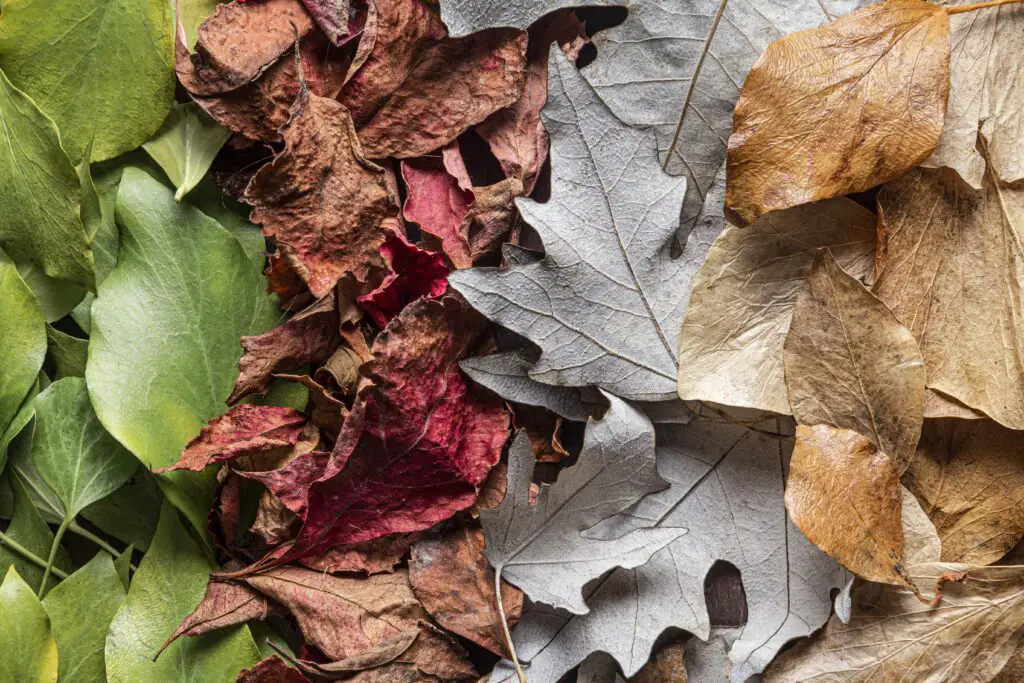
Aerating the compost is equally important as it introduces oxygen into the pile, which is a vital component for the aerobic microorganisms responsible for breaking down organic matter. By providing oxygen, you create a favorable environment for beneficial bacteria and fungi to thrive, speeding up the decomposition process. It also helps prevent anaerobic conditions, which can lead to unpleasant odors and slower decomposition.
These actions can be performed by using a garden fork or a compost turning tool. It is recommended to turn the pile every few weeks or whenever you notice the internal temperature dropping significantly. By consistently turning and aerating your leaf compost, you are maintaining the ideal conditions for decomposition, resulting in nutrient-rich compost that will greatly benefit your garden.
Dealing with common challenges and troubleshooting leaf composting issues
While leaf composting can be a rewarding and effective method for enriching your soil, it is not without its challenges. Understanding and addressing common issues that may arise during the composting process can help you troubleshoot and maintain a successful leaf composting system.
One common challenge is the presence of pests and unwanted critters in your compost pile. These pests can include rodents, insects, and even larger animals such as raccoons. To deter pests, it is important to avoid adding kitchen scraps or food waste to your leaf compost, as these can attract unwanted visitors. Additionally, consider using a secure composting container or bin with a lid to prevent access to the compost. If pests persist, try turning your compost regularly to disrupt their habitat and discourage their presence.
Another challenge to watch out for is the development of foul odors in your compost pile. While some earthy smells are normal during the decomposition process, strong and unpleasant odors may indicate an imbalance in your compost. This can be caused by too much moisture, inadequate aeration, or an incorrect mix of green and brown materials in your compost. To address this issue, ensure that your compost pile is well-aerated by turning it regularly. Adjust the moisture content by adding dry materials such as leaves or shredded paper if the compost is too wet, or moistening it with water if it is too dry.
Remember to maintain an appropriate ratio of green (nitrogen-rich) and brown (carbon-rich) materials to promote healthy decomposition and minimize odors.
Determining when your leaf compost is ready to use
Once you have begun the process of composting leaves, you may wonder how to determine when your leaf compost is ready to use in your garden. The key factor to consider is the level of decomposition and the transformation of the leaves into a dark, crumbly substance known as humus. This process typically takes several months to a year, depending on various factors such as temperature, moisture, and the composition of the leaves.
One way to assess the readiness of your leaf compost is by examining its appearance and texture. Mature leaf compost should have a dark brown or black color, indicating the breakdown of organic matter. It should also have a pleasant earthy smell, which is a sign of microbial activity. The texture should be fine and crumbly, without any visible traces of the original leaves. If you come across any partially decomposed leaves, it may be an indication that the compost needs further time to mature. However, keep in mind that small twigs or woody materials take longer to break down, so you may find some remnants even in well-composted leaf materials.
Applying leaf compost to your garden for maximum benefits
One of the most rewarding aspects of composting leaves is the ability to enrich your garden soil with nutrient-rich organic matter. When you apply leaf compost to your garden, you are giving your plants a natural source of essential nutrients that will promote healthy growth and improve overall soil fertility. The organic matter in leaf compost helps to retain moisture, improve soil structure, and enhance nutrient availability for plant roots. By incorporating leaf compost into your garden beds or using it as a top dressing around existing plants, you can maximize the benefits of composting and create a thriving garden ecosystem.
In addition to its nutrient content, leaf compost also offers other advantages for your garden. It acts as a natural mulch, helping to suppress weeds and reduce water evaporation from the soil surface. This can be particularly beneficial during hot summer months or in regions with water scarcity. Furthermore, the rich organic matter in leaf compost encourages earthworm activity and beneficial microorganisms, fostering a healthy soil ecosystem that supports plant growth. Applying leaf compost to your garden not only improves the immediate soil conditions but also contributes to the long-term sustainability and resilience of your garden ecosystem.
Tips for maintaining a successful leaf composting system in the long term
Maintaining a successful leaf composting system in the long term requires consistent monitoring and regular maintenance. Here are some tips to help you keep your composting system functioning efficiently:
1. Maintain a balance: It’s important to maintain a balance between greens (nitrogen-rich materials) and browns (carbon-rich materials) in your leaf compost. Too much nitrogen can result in a smelly, slimy compost pile, while too much carbon can slow down decomposition. Aim for a ratio of approximately 3 parts browns to 1 part greens to ensure optimal microbial activity and decomposition.
2. Keep it moist: Moisture is essential for the decomposition process in composting. Your leaf compost should resemble a damp sponge, with enough moisture to support the composting organisms but not so wet that it becomes waterlogged. Monitor the moisture level regularly and add water if necessary, especially during dry periods. Remember to cover your composting pile or bin to prevent excessive moisture loss.
To know more about leaf composting systems watch the video!
By following these tips, you can maintain a thriving leaf composting system that provides nutrient-rich compost for your garden. Stay tuned for more in-depth information on composting techniques and troubleshooting common challenges in leaf composting.
Can I compost leaves from different types of trees together?
Yes, you can compost leaves from different types of trees together. Mixing different types of leaves will provide a more balanced nutrient composition in your compost.
Can I use shredded paper as a brown material in my leaf compost?
Yes, shredded paper can be used as a brown material in your leaf compost. It is a great source of carbon and helps maintain a proper balance between greens and browns.
How often should I turn or aerate my leaf compost?
It is recommended to turn or aerate your leaf compost every 2-3 weeks. This helps promote oxygen circulation and speeds up the decomposition process.
Can I add kitchen scraps to my leaf compost?
Yes, you can add kitchen scraps to your leaf compost. It is important to balance the ratio of greens (such as kitchen scraps) to browns (such as leaves) to maintain a healthy composting process.
Can I add grass clippings to my leaf compost?
Yes, you can add grass clippings to your leaf compost. However, it is important to mix them with other brown materials to prevent the compost from becoming too nitrogen-rich.
How long does it take for leaf compost to be ready to use?
The time it takes for leaf compost to be ready can vary depending on various factors such as the composting method used and environmental conditions. On average, it can take anywhere from several months to a year.
Can I use leaf compost on all types of plants in my garden?
Yes, leaf compost can be used on all types of plants in your garden. It provides essential nutrients and improves soil structure, promoting healthy growth for various plants.
How should I apply leaf compost to my garden?
To apply leaf compost to your garden, spread a layer of compost evenly over the soil surface and gently work it into the top few inches of soil. Avoid piling it too close to plant stems to prevent rotting.
How can I maintain a successful leaf composting system in the long term?
To maintain a successful leaf composting system in the long term, it is important to regularly monitor and maintain moisture levels, temperature, and a proper balance between greens and browns. Regular turning and aerating of the compost is also crucial.

